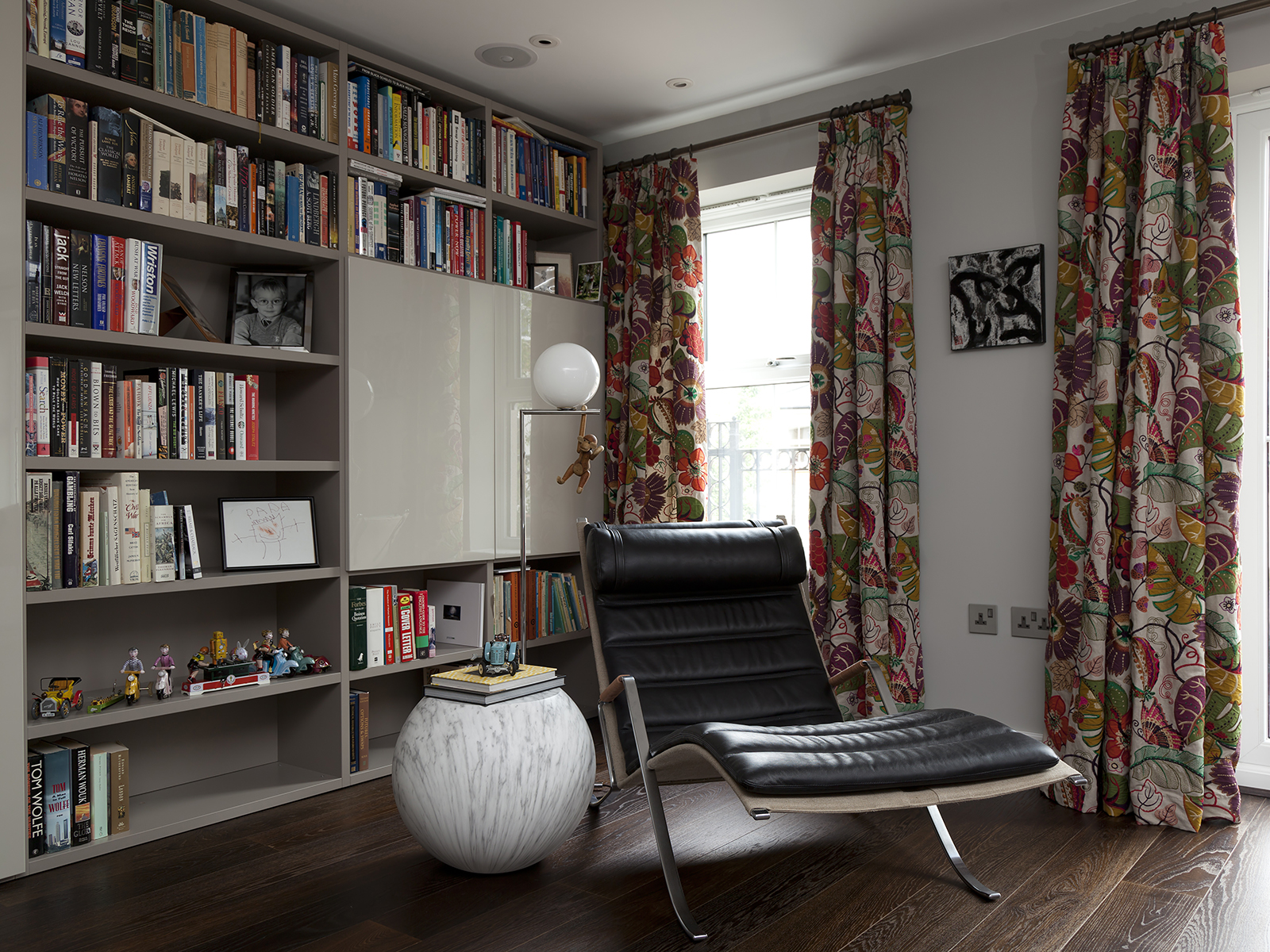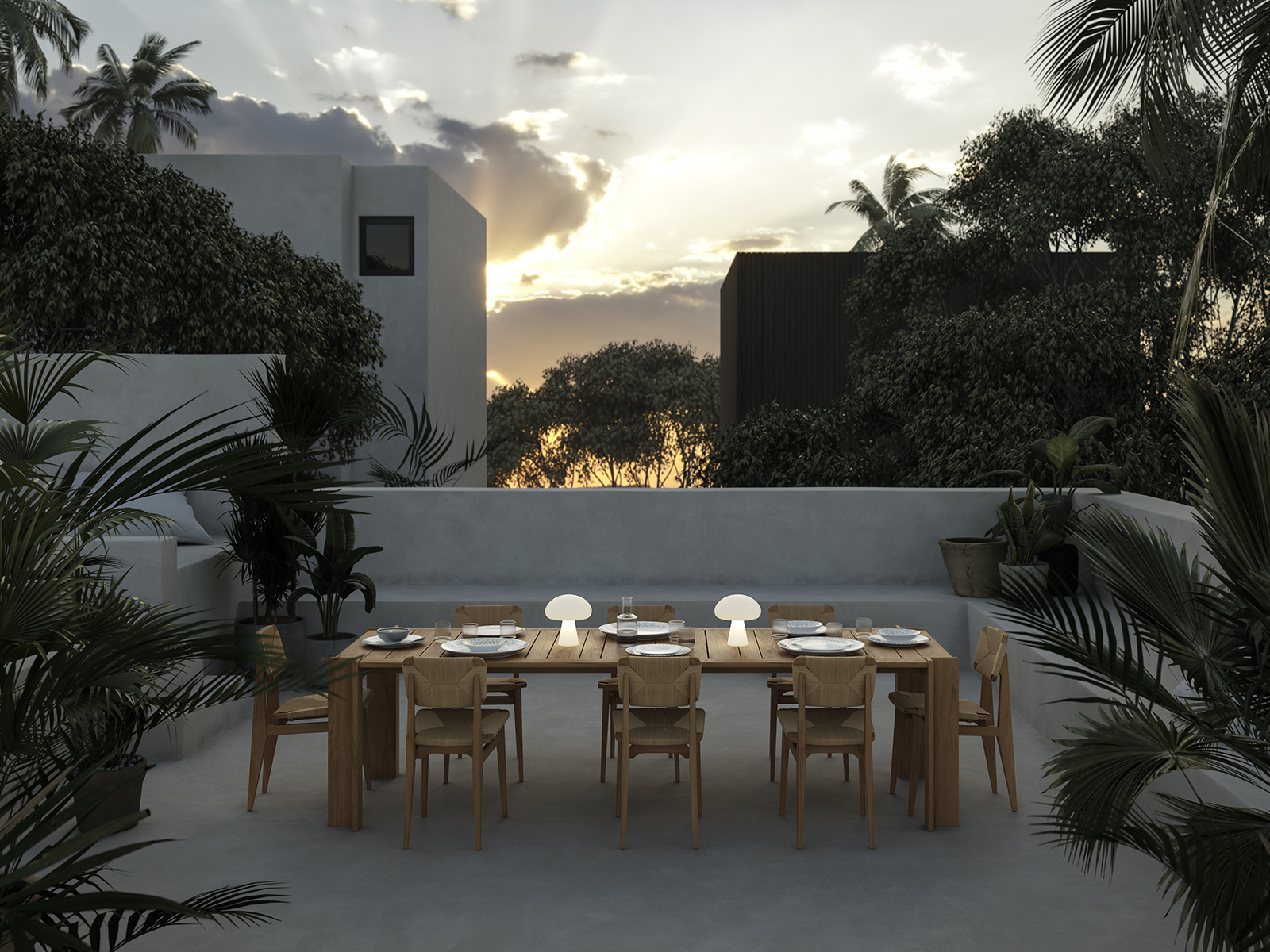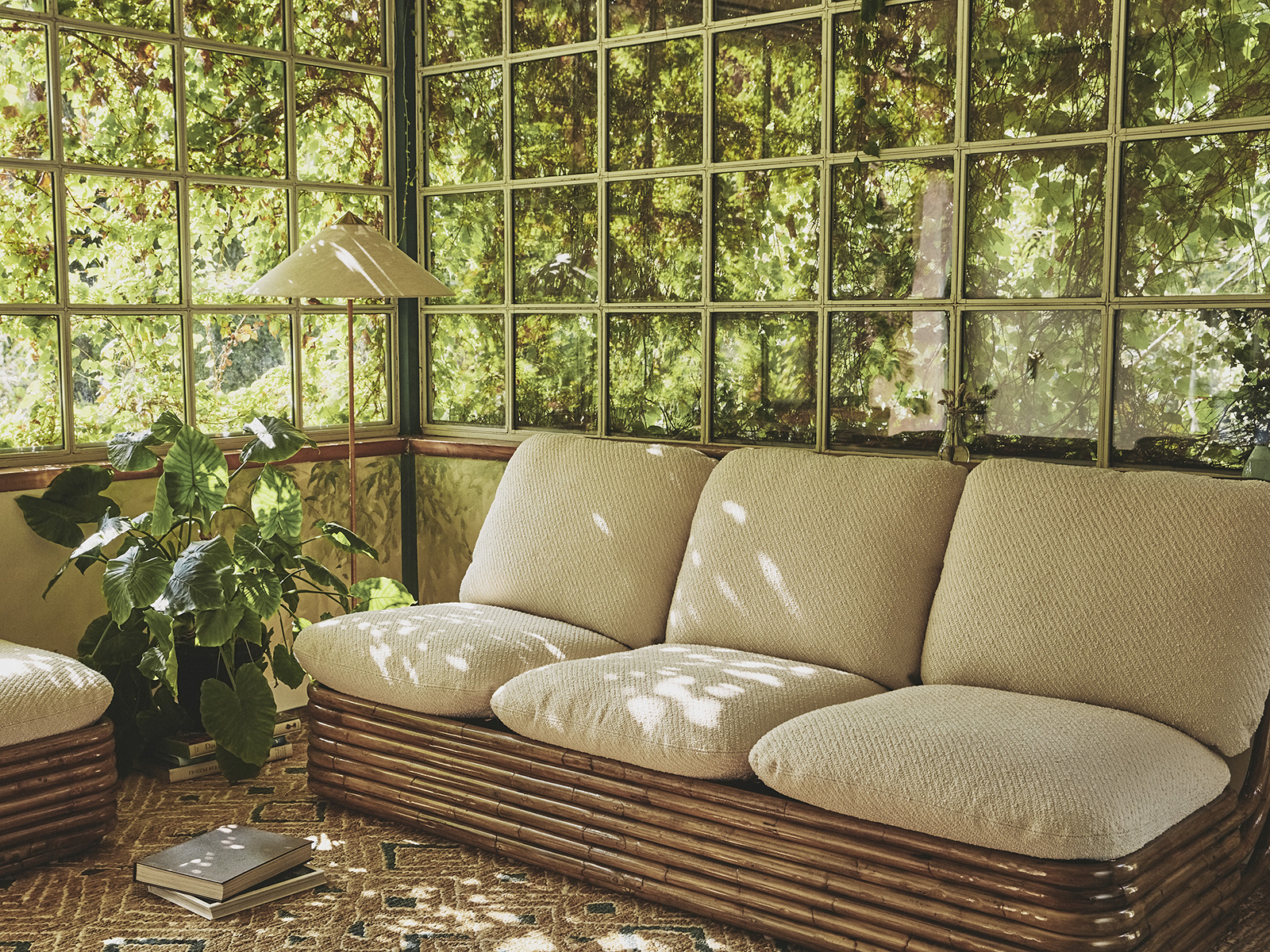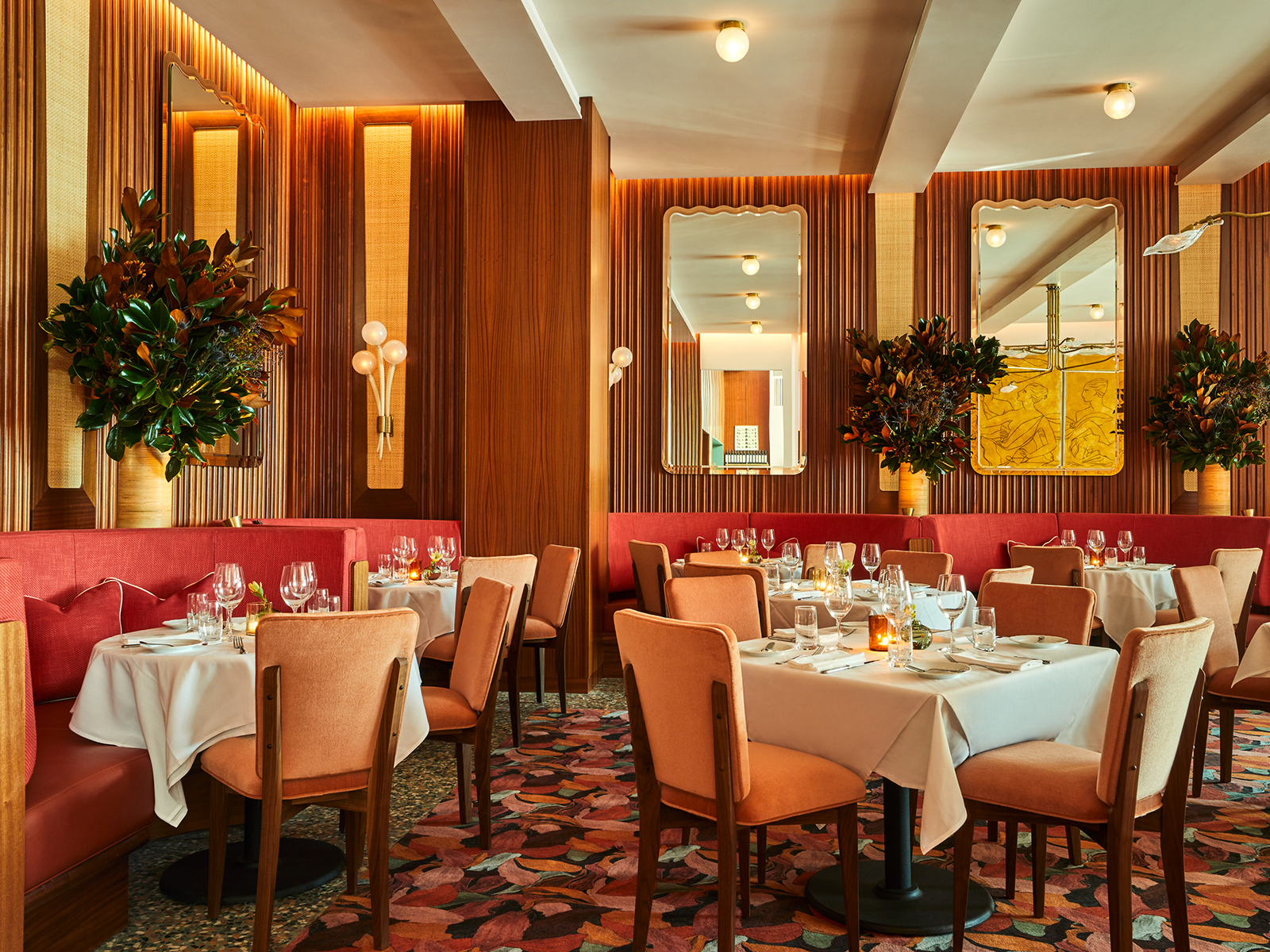Step Back in Time: Return to the Designer Seventies
What do the words “1970s” and “designer” make you think of? An orange and brown color palette? Avocado suites and shagpile carpets? A refined version of the 1970s is back in vogue
What do the words “1970s” and “designer” make you think of? An orange and brown color palette? Avocado suites and shagpile carpets? A refined version of the 1970s is back in vogue
“Ever and ever, forever and ever you’ll be the one, that shines on me like the morning sun,” sang Greek performer Demis Roussos in Forever and Ever, released in 1973. He encapsulated the sound and the look of the Seventies, swishing about on the television in a swirl of kaftaned glory. Had he been able to step out of the box and into the contemporary home of 1973, he would have found himself perfectly camouflaged because his orange, yellow, brown, and red robes would have been as one with the designer décor.
It happens time and time again. After a period of austerity or difficulty, fashion—interior design as well as clothing—lets rip with styles that are dynamic and indulgent—Nicola Holden, interior designer
Seventies’ interiors were a riot of color and pattern. Or perhaps they were just a riot, a big, noisy celebration of more being more. Among the many crimes against taste the decade stood accused of committing were the waterbed (patented in 1971); the avocado washroom suite; the shagpile rug; the stone-clad fireplace; the floating staircase; and the macramé everything—owls were particularly popular: it’s a list that, for years, read like the ultimate what’s what of the bad, the awful, and the tacky.

And yet our homes and hotels are once again welcoming the bright, the bold, but perhaps the less brash best of the 1970s. Guests checking in to Hotel Les Deux Gares, in Paris, will find that designer Luke Edward Hall, pictured below, has created a distinctly retro-driven fusion of Art Deco meets the Seventies with his avocado bathtubs and washbasins set against sunflower yellow walls, blush-pink suites against emerald-green tiles, and sink-into-me velvet couches on geometric, brown rugs. The rooms flourish with a wild mismatch of colorful fabrics that reflect the abandonment and flamboyance of both periods.

U.K.-based designer Nicola Holden is not surprised that the seemingly anything-goes Seventies are back. “It happens time and time again. After a period of austerity or difficulty, fashion—interior design as well as clothing—lets rip with styles that are dynamic and indulgent,” she says.
During lockdown, Holden suggests, many people revaluated their terribly polite and calm interior design, probably painted in wonderfully named shades of what was essentially gray, and they revolted. They wanted to feel energized; they missed the stimulation of pre-pandemic ordinary life, which often meant little more than going about their everyday business; they dreamt of the life that awaited them, and they needed their homes to help them do that.

“Interior design is a powerful mood enhancer,” says Holden. “It affects us psychologically and physically. Over the past two years, people have veered towards biophilic styling, which brings nature into the home, and towards interiors with color, vivacity and verve. Seventies décor fits the bill perfectly.
“It shares many biophilic design motifs such as bringing the outside in—not only with live plants but also with wallpaper, furniture fabrics and homeware emboldened with ferns, flowers, and leaves, and with wood paneling, natural materials, and softer, more inviting lines. Many clients are now asking for something more playful and textured. They want their homes to be fun, to give them joy,” the designer adds.

As a child of the Seventies, Danish design house GUBI, founded in 1967, pioneered many of the young furniture makers who were making their name at the time. Half a century later, it is still championing them and their products and, spurred on by renewed interest in the decade, has gone back to its archives to see what it can adapt for 21st-century living.
In 2021, GUBI remade Bill Curry’s Obello, or mushroom, lamp using the same frosted, mouth-blown glass shade as the originals—but in a portable, rechargeable version that can be taken outside. This year, the company celebrated the centenary of designer Gabriella Crespi’s birth by bringing her Bohemian 72 Collection—which she originally made only for private clients—into production for the first time. The rattan pieces, says GUBI’s website, “unite indoor and outdoor living,” and are a “pinnacle of the jet-set bohemian lounge lifestyle”.

GUBI is also producing an outdoor version of designer Pierre Paulin’s cloud-like Pacha Collection. Launched in 1975, his low-slung lounge chair and couch—designed with no legs—reflected the more laid-back mood of the decade.
This is a look that New York-based Robert McKinley, now one of the world’s top hotel designers, has perfected. His color palette is often earthy—rich, reddy browns and terracottas; toffees and caramels; Amalfi lemons and oranges, and yes, avocado in the bathrooms and kitchens.
There’s rattan wherever he sees fit—as lampshades or chairs or tables—and so much that’s retro and yet also completely contemporary. His aim, he says, is to create spaces that transport people to places of well-being and contentment. The accommodation he creates, whether a hotel or a home, certainly seems to do that, and although seemingly devoid of restraints, in as far as he gives free rein to inspiration and to influences—of which the Seventies are but one—is always harmonious.

McKinley seems to throw everything into the designer mix—nautical, bohemian, retro, futuristic—and yet it all lands perfectly in place. But how can homeowners wishing to retrofit their homes with a Seventies vibe do the same?
The key to avoid it looking over the top, says Holden, is to work with balance. “Unless you are really confident with color and clashing patterns, I would avoid doing an entire room in one style. Our homes are a reflection of us, our lives, our stories, our passions, so it would be a shame to throw out all that you love because you are following a trend.
By all means add color, or a patterned wallpaper, but then keep your furnishings neutral. Or, if you simply want to modernize your home rather than redecorate, add touches and detail. Again, work with balance. A striking 1970s vase might look out of place in isolation on a 21st-century shelf, but if you add another piece from that era, or if you position it on a vintage table, then you are pulling the look together. Remember, too, that this is a great opportunity to buy vintage pieces. Prices are high for the top-end designers from the period, but if you have an eye, you can find pieces that are equally beguiling for far less.”
Awarded the Royal Institute of the Architects of Ireland’s Triennial Housing Medal for 1971-73, this detached home designed by renowned architect Ronald Tallon is located on just under two acres of mature grounds adjacent to the fairways of Foxrock Golf Club. A truly unique property, this simple steel and glass house was designed as a single-span structure, giving clear uninterrupted internal spaces. The original house has been extended twice with individual extensions at the ends, stepped back from the original facades, so that, both visually and conceptually, the original house remains perfectly intact.
This impressive property makes a clear nod to the design style of the 1970s with an orange work surface in the kitchen, concrete features, and retro furniture including brightly colored sun loungers. The home is divided into four floors of relaxed open plan living space covering 38,000 square feet (3,500 sq m). Outside, there’s a private swimming pool surrounded by coconut trees, overlooking the beach, the sea, and a large area of preserved Atlantic Forest.
Banner: Hotel Les Deux Gares by Luke Edward Hall. Credit: Benoit Linero